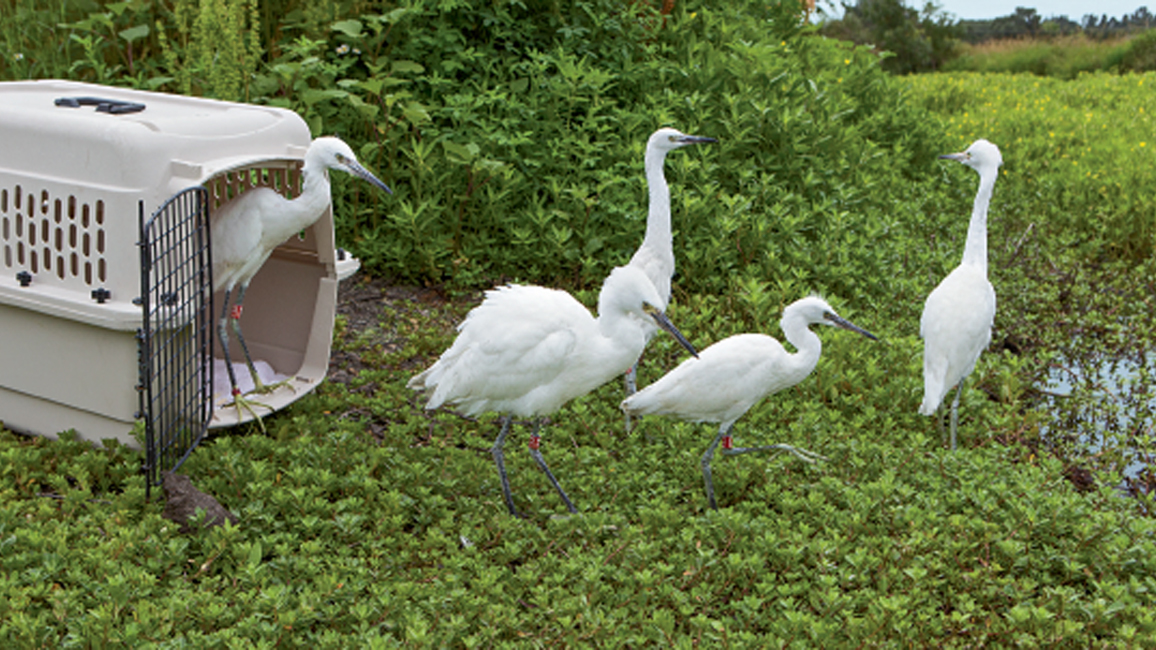
Herons Ahead
By Kathy Kranking; photos by Suzi EszterhasA tree in the middle of a busy street can be a dangerous place to raise a family. But the birds in this story do it anyway! Luckily, some people are watching out for them.
Herons fly in as traffic speeds below them. They’re carrying sticks to their nesting trees, two huge eucalyptus (yoo-kuh-LIP-tuss) on 9th Street in Santa Rosa, California.
Four kinds of birds in the heron family nest in the trees: black-crowned night-herons, great egrets, snowy egrets, and cattle egrets. The birds return to this spot every year to build their nests, lay eggs, and raise their families of chicks.
But as the chicks get older, they may fall or even jump out of the nests before they can fly. Normally the parents could still care for them on the ground. But when the ground is a busy street, that can spell trouble.
Helping Hands
But there’s good news for the chicks: People are working to help them. Each year during nesting time, volunteers put plastic fencing around the area below the trees and cover the ground there with straw. So if any chicks fall, the straw gives them a soft landing. And the fencing keeps them from going into the busy road.
The lanes nearest to the trees are closed to cars to protect the birds. But some chicks fall farther out, landing right in the middle of traffic. So volunteers patrol the whole area, looking out for any chicks in trouble. Some chicks don’t get hurt when they fall, but it would be too stressful to the other birds for volunteers to try to return chicks to their nests. So when they find a chick, they carefully pick it up and take it to International Bird Rescue. This group saves the lives of birds around the world and runs a rescue center nearby.
The chicks are in good hands at the rescue center. Workers there take care of any injuries they may have, such as broken wings, legs, and even bills. They nurse the chicks back to health, keeping them warm and well fed.
A Matter of Convenience?
Why do the herons choose to nest in trees that are so close to people and noisy traffic? No one knows for sure. But the trees are near a wetland where the parents can find fish, crayfish, and other things they like to eat. So for them, it’s like living near a grocery store!
Free Again
Once the birds are better and old enough to live on their own, volunteers take them to the nearby wetland. When the door to their carrier is opened, the birds head out to explore their new home.
Perhaps in a couple of years, the birds will return to their hatching tree to raise young of their own. If they do, people will be there, too, working hard to keep them all safe.
“Herons Ahead” originally appeared in the May 2016 issue of Ranger Rick magazine.
(Click on each image above for a closer view of the story.)



















